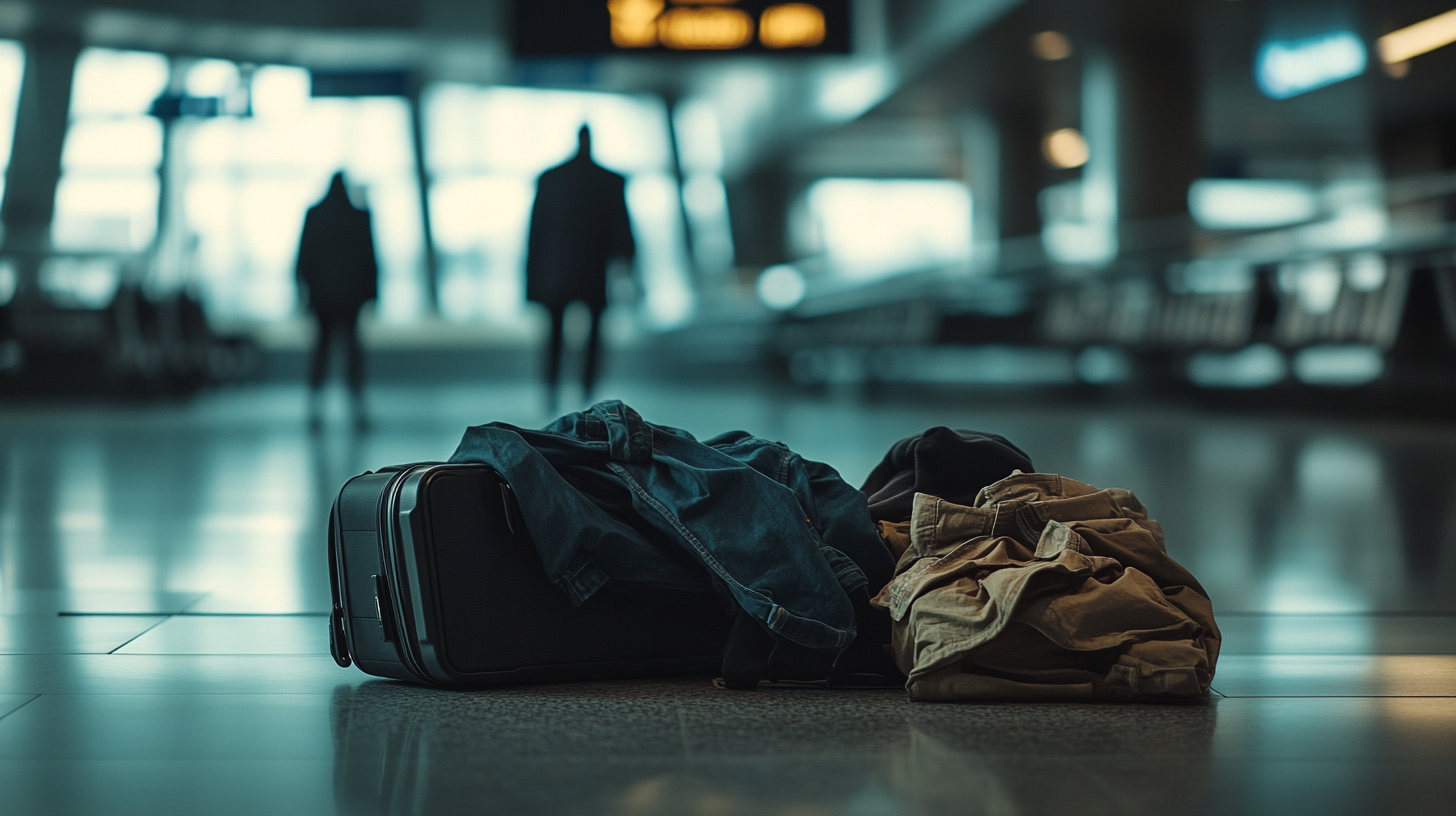10 Savvy Ways to Trim Business Travel Costs
I’ve always believed that every trip, whether for business or leisure, holds potential for meaningful experiences. Over the years, I’ve honed a few handy strategies that help reduce costs without compromising comfort or productivity. In my view, a well-planned business trip can still feel like a satisfying journey—one that respects both your budget and your time. Below, I’m sharing ten savvy ways to trim business travel expenses, along with some fresh insights I’ve gathered from real-world examples and reputable industry data.
1. Book Early

Booking flights and hotels in advance remains one of the most reliable ways to lock in better deals and seat availability. I’ve noticed that snagging a reservation at least two weeks before your departure date can help you save up to 10%, based on insights from various industry sources. If I see a decent price and a reasonable schedule, I rarely wait—it almost always pays off in the long run.
In my own travels, I’ve realized that flexible planning is key. Let’s say I’m aiming to attend a conference in another city. The moment I receive the event details, I scope out flight options and keep watch on early-bird hotel rates. A recent study by the Global Business Travel Association (GBTA) from 2024 even suggests that travelers who finalize their bookings three or more weeks prior to departure often enjoy additional savings on surcharges.
If you’re coordinating group travel for colleagues, consider corporate codes or group discounts that airlines and hotel chains sometimes offer. Early booking also helps avoid last-minute scrambles, which can result in stress, higher fares, and fewer quality seat choices. It’s a win-win: less worry and more money saved.
2. Aim for Off-Peak Travel

By traveling during midweek or off-season periods, I’ve found the difference in pricing can be astounding. Whenever I’m flexible on dates, I often shift departures from a Monday morning to a Tuesday afternoon or plan a return on a less popular travel day. The International Air Transport Association (IATA) notes that demand-driven surcharges on peak days can raise ticket prices by double-digit percentages.
Another tactic is to check alternative airports near major hubs. For instance, if I’m flying into New York City for meetings, I might look at Newark or even Westchester County if it aligns with my schedule. Just remember to balance ticket price against extra transport costs on the ground. Sometimes, a slightly longer commute between the airport and city center still comes out cheaper. Ultimately, off-peak travel often equals less congestion, reduced fares, and more time for you to catch up on that all-important briefing before touchdown.
Additionally, off-peak times aren’t limited to weekdays; some weekends can offer surprising bargains. Checking travel sites on a Sunday or opting to depart after major holiday rushes has paid off for me dozens of times. It’s especially helpful when planning trips that don’t hinge on corporate Monday-to-Friday schedules.
3. Join Membership Hotel Discount Clubs

I’m a big fan of membership hotel discount clubs, especially those that bundle multiple perks. From free breakfast to complimentary welcome drinks, these clubs occasionally sweeten the deal with discounted tickets to local attractions or special events. I once stayed at a 4-star property in San Francisco for the price of a typical budget hotel, simply because I was able to tap into a targeted discount program.
Some discount club memberships grant you access to exclusive online portals where rates are consistently lower than standard booking platforms. According to a 2025 industry overview by the U.S. Travel Association, membership-based lodging deals can slice anywhere from 10% to 25% off the usual nightly rate. Over the course of multiple trips, these savings stack up—not just on paper, but in actual money you can funnel back into your business or leisure pursuits.
Whenever I’m scouting for hotels, I keep an eye on flash sales or limited-time promos. Signing up for a mailing list can feel like cluttering your inbox, but it’s worthwhile if the payoff is major savings on premium accommodation. Plus, many clubs offer tiered perks the more often you book, so I always make sure to stay consistent with one or two programs.
4. Embrace Loyalty Programs

Loyalty programs are a cornerstone of my travel strategy. While they’re often marketed to leisure flyers, business travelers can benefit even more due to frequent flights and corporate stays. I combine airline loyalty programs with hotel chains and credit cards, letting me rack up points from multiple angles. Those points typically convert into upgrades, lounge access, or even free flights—yielding tangible value.
According to industry data, about 72% of frequent flyers in 2025 participate in at least one major airline’s loyalty scheme. I fall into that category, juggling a few memberships to maximize route coverage. Even if the miles don’t always go toward immediate perks, they eventually add up to something worthwhile, like a future flight credit. Add a travel management company (TMC) to the mix, and you can unlock negotiated rates plus specialized perks you might not find publicly advertised.
One of my favorite loyalty hacks is to double-dip whenever possible. If I’m paying with a rewards credit card, I earn points from the hotel stay itself and from the card’s spending category bonus. This two-tiered system has helped me afford last-minute upgrades or freebies, particularly on international routes.
5. Pack Light and Avoid Baggage Fees

When I initially started traveling for work, I would overpack, dragging a massive suitcase from airport to airport. It wasn’t long before I realized baggage fees could be a significant drain on my travel budget. These days, I focus on carry-ons and a sleek personal item. Not only do I avoid extra fees, but I also breeze through security more quickly.
In my own experience, packing light adds agility to a trip. You can change flight connections more easily, sidestep lost-luggage mishaps, and skip the wait at baggage claim. It’s especially beneficial if you’re multi-tasking, like jumping from a client meeting in the morning to a networking event in the afternoon. A recent survey by the Travel Goods Association revealed that travelers who bring only carry-on luggage save an average of $50 per round trip just on baggage fees.
If you’re struggling to fit everything in one bag, consider laundry services at your destination or plan outfits with mix-and-match capabilities. Less truly can be more. Not only does packing light save money, it also reduces stress and keeps you moving fluidly through your trip.
6. Compare Prices and Bundle

A bit of online research can lead to noticeable price reductions. By comparing rates across multiple platforms—airline websites, aggregated search engines, and specialized deal sites—you can often discover hidden discounts. When I see a promising fare on one site, I’ll cross-check it with at least two others before I hit “book.”
Additionally, bundling your flights, hotels, and car rentals can yield a lower overall cost. If I know I’ll need both a hotel room and a rental vehicle, I look for package deals that combine the two at a discount. A recent consumer report by Skift indicates that travel bundles can slice 15% off the total cost compared to booking each component separately.
Make sure to read the fine print—bundled packages can sometimes be non-refundable or come with limited flexibility. However, if you’re relatively certain about your itinerary, it’s an efficient way to stash away some funds for the next big trip or an upgraded seat on a long-haul flight.
7. Opt for Boutique Hotels or Rentals

Large hotel chains may be the obvious choice when traveling on business, but I’ve often been pleasantly surprised by boutique hotels and short-term rentals. These properties sometimes deliver as much—or more—comfort at a more attractive price point. Some boutique hotels feature local design touches, making the ambiance refreshing compared to uniform chain decor.
In big cities, I’ve stayed in smaller, independently run hotels that offered free local snacks, rooftop lounges, or co-working spaces—a definite plus if you need a break from working in your room. According to a 2023 hospitality review by STR Global, boutique hotel room rates in certain markets have remained 10% to 20% cheaper than those in similarly rated chain properties.
If you’re open to short-term rentals, platforms like Airbnb or Vrbo can be cost-effective for extended trips or group stays. Staying in a rented apartment can cut meal expenses by giving you access to a kitchen. Plus, you often get a more authentic feel for the neighborhood, which is invaluable if you have some downtime to explore.
8. Leverage Flexible Scheduling

I’ve found that a little wiggle room in meetings and arrival times can translate into noticeable savings. If the main event I’m attending starts on a Tuesday afternoon, I might fly in late Monday rather than early Tuesday, snagging a cheaper ticket in the process. Data from the Airlines Reporting Corporation (ARC) in 2025 shows that travelers who adjust their schedules to less conventional time slots save an average of 8% on airfare.
This approach extends to hotel bookings, too. If you can schedule your check-in for an off-peak day—say, a Sunday or an odd midweek date—you can usually land a more favorable nightly rate. I’ve personally observed that even shifting your stay by just one day can result in surprising cost reductions, especially if there’s a local event that affects hotel demand.
Keep your eyes peeled for airline fare alerts, flash sales, and flexible-rate hotel reservations. While it might require a bit more legwork, it pays off when your travel calendar can bend to accommodate lower prices. Just confirm that your main business commitments can move accordingly, so you’re not rebooking at the last minute.
9. Make Use of Corporate Travel Policies

A robust travel and expense policy can be a real game-changer for companies of all sizes. In my career, I’ve seen how streamlined guidelines—covering everything from approved airline classes to daily meal allowances—clarify expectations and keep budgets in check. An effective T&E policy not only saves money, but also conserves employee time by reducing back-and-forth on what’s reimbursable.
Bryce Carter, CPA, often stresses the importance of setting a comfortable yet cost-conscious spending framework. Having a policy that encourages employees to book early, cap meal expenses, and use preferred suppliers helps push those travel dollars further. A 2024 survey by Deloitte suggests that around 82% of companies with a clearly defined T&E policy reported fewer expense-report errors and better overall travel cost management.
From my perspective, a sound policy also fosters trust within an organization. Everyone knows the rules, so there’s no confusion about which expenses are allowed and which are not. Plus, standardized reporting helps identify areas for improvement, like renegotiating vendor deals or establishing new partnerships for bulk discounts.
10. Use Cost-Effective Ground Transportation

I’m not opposed to renting a car when necessary, but over the years I’ve found plenty of cost-effective alternatives. Whenever I’m in a modern city with reliable transit, I’ll hop on trains, subways, or buses. These options often cost a fraction of a taxi or rental car and keep carbon emissions in check. If I need door-to-door service, a rideshare can still be cheaper than some of the airport car rental rates.
Some travelers overlook business-friendly features on public transport. Many urban trains or buses now offer Wi-Fi, charging stations, and comfortable seating, which is perfect for sending out those last-minute emails on the way to a meeting. Even a short rail journey can help me recenter after a cross-country flight—there’s something relaxing about watching the city roll by as you head toward your hotel.
Additionally, certain credit cards and travel memberships include discounts for car-sharing services, local shuttles, or rideshare credits. If you’re traveling in a group, compare the cost of splitting a ride versus multiple individual fares. Doing a little homework in advance can really add up to significant savings over the course of a multi-day trip.
The Bottom Line

Rising prices don’t have to force you into budget overruns. By refining your travel approach with early bookings, off-peak planning, membership discounts, and loyalty programs, you’ll position yourself to save money and still enjoy every mile in style. I’ve learned that small steps—like traveling with just a carry-on or mixing up your hotel choices—add up faster than you might think. Keep these tips in mind, and watch your yearly T&E report make room for all the aspects that matter most, whether it’s future flights, key client dinners, or a well-deserved upgrade.
Final Thoughts

As the travel landscape continues to evolve in 2025, it’s more important than ever to stay vigilant about emerging deals, loyalty incentives, and industry trends. Remaining open to new experiences—like exploring boutique hotels or hopping on public transport—can lead to savings and memorable moments. I genuinely believe that cost-conscious travel isn’t just about cutting expenses; it’s also about discovering creative ways to navigate the globe.
Whether you’re a corporate traveler eyeing your bottom line or a small business owner aiming to stretch each dollar, these strategies can make a world of difference. There’s still room for comfort and fun in a tight budget, as long as you plan wisely. The idea is to strike a balance that respects both financial limits and the human need for a positive, productive journey.
Barry B.’s Take
As someone who’s constantly on the move, I’ve found these tips invaluable for maximizing both savings and convenience. I’ve come to appreciate the finer points of off-peak flights and the hidden perks of loyalty programs—small changes that can fundamentally upgrade the travel experience.
Saving money shouldn’t feel like sacrificing comfort. In my world, creativity goes hand in hand with practicality. By blending strategic planning with a sense of adventure, we can turn even the most routine business trip into an opportunity for both professional success and personal discovery.
milesBUZZ is your launchpad for more tips, news, and entertaining insights tailored to the frequent flyer lifestyle.







